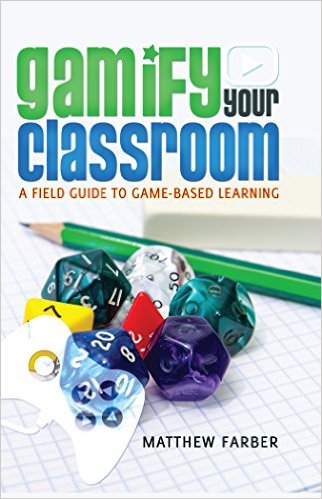Many educators hold notions about what constitutes an edgame. Some think it’s a game loosely based on the curriculum. Others believe edgames are quizzes, something to be downloaded from the iTunes store.
Still others suppose that edgames are commercial ones like Sid Meir’s Civilization, Minecraft, or Pokemon Go that are then tied to education goals. In other cases, the game may be a specific simulation, for example, the 1979 Revolution: Black Friday or The Body VR. Both serious games, one puts the player in the midst of the Iranian Revolution. The other takes a player on an Oculus tour of the human biological system.
The Experts Weigh In

“All of the above” is the correct answer. An Edgame can be a variety of things.
In his excellent book “Gamify Your Classroom,” Matthew Farber defines Jane McGonical’s definition of an Edgame. She believes that a game must have around four key factors:
- A Goal
- Rules
- A Feedback System
- Voluntary Participation
This definition would disqualify many of the electronic games currently used by educators. Matt Farber proceeds to have a conversation about the McGonical definition of games largely revolves around voluntary participation. He asks, “Does forcing kids to use a game for educational purposes destroy the intent of a game in essence violating the entire entertainment value of a game by turning it into work?”
Discover some examples of standards-aligned and engaging EdGames: 6th Grade Science Games for Your Classroom
James Paul Gee Responds
Farber’s search for an edgame definition unsurprisingly includes an interview with the godfather of game-based learning (GBL), James Paul Gee, someone we’ve discussed previously. We recently wrote up Professor James Paul Gee’s 16 Principles for Good Game-Based Learning.
But even though Professor Gee provides a lot of structure and regular commentary about what makes a good edgame, he dismisses many of the nuances needed to define one. For Gee, a game’s adherence to every aspect of defined games or every principle of game-based learning is irrelevant. What matters is that the game inspires learning.
Gee told Farber, “The issue is how do we get engagement by an affiliation, not whether we call it ‘play’ or a ‘game’ […] What we want to say is, ‘What’s the interactivity? What’s the engagement? What are the values?’”
EdGames Defined

In essence, good edgames or game-based learning platforms inspire children to learn. They involve students and capture their interest. As a result, they deliver exceptional educational value.
Most educators want supplementary curriculum tools that engage and help students master their studies. So whether a game is short or long, comical or serious, made for education or originally developed for commercial use is immaterial. To be an edgame for educators, it simply must meet the barometers of engagement and basic learning.
What do you think makes an edgame?



